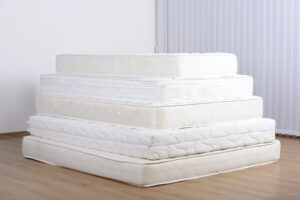
Some individuals are opting for a more grounded approach to their nightly slumber by sleeping on a floor mattress.
Have you ever slept on a floor mattress? If you have, you are certainly not alone! Departing from traditional bed frames, some individuals are opting for a more grounded approach to their nightly slumber by sleeping on a floor mattress. But what drives people to choose this minimalist sleeping arrangement, and what are the associated pros and cons?
Why Floor Mattresses?
The allure of sleeping on a floor mattress stems from various factors. For starters, some find it offers a firmer and more supportive surface compared to conventional beds. Especially for those suffering from back pain or seeking improved posture, the flatness and firmness of the floor can provide relief and alignment benefits. Additionally, the simplicity and minimalism associated with floor mattresses resonate with individuals embracing a clutter-free lifestyle or minimalist aesthetic.
Health Considerations
While anecdotal evidence suggests potential health benefits such as reduced back pain, the scientific support for sleeping directly on the floor remains limited. Moreover, there are health risks to consider, particularly for individuals with mobility issues or chronic pain conditions. The accessibility of a low-lying mattress may pose challenges for getting in and out of bed, potentially exacerbating existing health concerns and chronic physical discomfort.
Allergens and Hygiene
One of the foremost concerns with floor mattresses is their proximity to dust and allergens. Without the elevation provided by a bed frame or foundation, mattresses on the floor are more susceptible to collecting dust, dead skin cells, and other allergens. This increased exposure can trigger allergies and respiratory issues, highlighting the importance of proper mattress maintenance and allergen mitigation strategies.
Mold and Moisture
Another significant drawback of floor sleeping is the heightened risk of mold and mildew accumulation. Mattress ventilation is crucial for preventing moisture buildup, which can lead to mold growth and bacterial proliferation. Elevating the mattress allows for air circulation, whereas placing it directly on the floor traps moisture from carpets or flooring, creating an environment conducive to mold formation.
Critter Concerns
For the insect-averse among us, the prospect of sharing a bed with creepy crawlies is a valid deterrent. Sleeping closer to the ground increases the likelihood of encountering pests such as spiders, ants, and bed bugs. While proper mattress maintenance and pest control measures can mitigate these risks, the proximity to the floor inherently exposes sleepers to potential insect intruders.
Temperature Regulation
Contrary to common belief, sleeping on the floor doesn’t necessarily equate to cooler temperatures. While the floor may indeed be cooler, the lack of elevation can impede air circulation around the mattress, potentially exacerbating heat retention issues. Cooling mattress options exist to address temperature regulation concerns, but they may not fully compensate for the lack of airflow inherent in floor sleeping setups.
Choosing the Right Mattress
Not all mattresses are created equal when it comes to floor sleeping compatibility. While innerspring and hybrid mattresses offer structural support and ventilation conducive to floor setups, memory foam mattresses are more susceptible to humidity and moisture retention. Regardless of mattress type, using a base or foundation is highly recommended to provide adequate support and airflow.
A GOOD NIGHT OF REST WITH MATTRESS PEDDLERS
When doing your research on Mattress Peddlers, you’ll find we match up to top-quality mattress company criteria, and even go beyond it! We’ve been a family-owned business providing quality mattresses and furniture throughout Delaware and even beyond since 1994. We love working closely with our customers to figure out their needs and also offer free shipping throughout Lewes, Millsboro, Rehoboth Beach, Harbeson, and the surrounding areas of Delaware.

